Pothos is a popular houseplant that is easy to care for and can add a touch of green to any indoor space. However, if you notice that your pothos stems are turning brown, it can be a cause for concern. Brown stems can indicate a variety of issues, ranging from simple watering problems to more serious pest infestations or diseases.
To understand why pothos stems are turning brown, it’s important to first understand the plant itself. Pothos is a vine plant that can grow up to 10 feet long. It has heart-shaped leaves that are typically green with yellow or white variegation.
Pothos is a hardy plant that can tolerate a wide range of growing conditions, but it does have some specific requirements that need to be met in order to keep it healthy.
There are several common reasons why pothos stems may turn brown. These include watering issues, soil and fertilization problems, light and temperature factors, and pest and disease problems. Identifying the underlying cause of the brown stems is key to providing the right solution and preventing further damage to the plant.
Key Takeaways
- Pothos stems turning brown can indicate a variety of issues, ranging from simple watering problems to more serious pest infestations or diseases.
- Understanding the specific growing conditions that pothos requires is important to keep it healthy.
- Identifying the underlying cause of brown stems is key to providing the right solution and preventing further damage to the plant.
Check out these other posts:
- Why Are My Sunflower Leaves Turning Brown and Dying
- Why Are My Pistils Turning Brown Early?
- Why Are My Peonies Turning Brown?
Understanding Pothos Plant
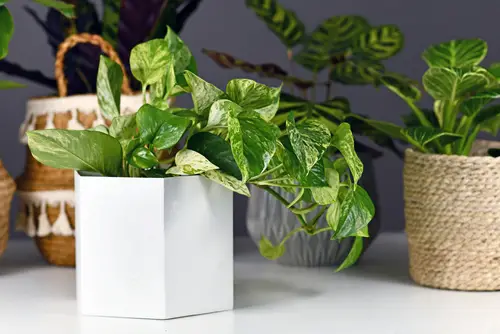
Pothos plant, also known as Devil’s Ivy, is a popular houseplant that is low-maintenance and easy to care for. It is an ideal choice for beginner gardeners who want to add greenery to their homes. Pothos plants are native to the Solomon Islands and are known for their long, trailing vines that can grow up to 30 feet in length.
Pothos plants are known for their ability to purify the air by removing toxins such as formaldehyde, benzene, and xylene. They are also known for their unique variegated leaves that come in shades of green, yellow, and white.
One of the reasons why pothos plants are so popular is because they are easy to care for. They can thrive in a wide range of light conditions, from low to bright indirect light. Pothos plants prefer well-draining soil and should be watered when the soil is dry to the touch.
However, despite their low-maintenance nature, pothos plants can still experience issues such as brown stems. It is important to understand the causes of brown stems in pothos plants to prevent further damage.
In the next section, we will discuss some of the common causes of brown stems in pothos plants and how to fix them.
Pothos Stems Turning Brown – 6 Common Problems
Pothos plants are popular indoor plants that are easy to care for and can add a touch of greenery to any room. However, it can be concerning when the stems of the plant start turning brown. Here are some of the most common reasons why pothos stems turn brown:
1. Overwatering
Overwatering is one of the most common reasons why pothos stems turn brown. When the plant is overwatered, the roots can become waterlogged, which can lead to root rot.
This can cause the stems to turn brown and mushy, and the leaves to yellow. To prevent overwatering, make sure to let the soil dry out between waterings and avoid watering the plant too frequently.
2. Underwatering
On the other hand, underwatering can also cause pothos stems to turn brown. When the plant is not watered enough, the leaves can become dry and brittle, and the stems can turn brown and shrivel up. To prevent underwatering, make sure to water the plant regularly and monitor the soil moisture level.
3. Incorrect Soil
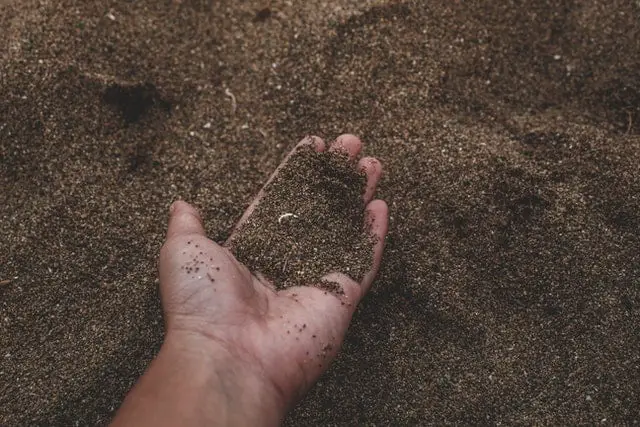
Pothos plants prefer well-draining soil that is rich in organic matter. If the soil is too heavy or compacted, it can prevent water from draining properly, which can lead to overwatering and root rot. Make sure to use a well-draining soil mix that is specifically formulated for indoor plants.
4. Cold Exposure
Pothos plants are tropical plants that prefer warm temperatures and high humidity levels. If the plant is exposed to cold temperatures or drafts, it can cause the stems to turn brown and the leaves to become discolored. Make sure to keep the plant in a warm, humid location away from cold drafts.
5. Pests and Diseases
Pests and diseases can also cause pothos stems to turn brown. Common pests that can affect pothos plants include spider mites, mealybugs, and scale insects. These pests can cause the leaves to become discolored and the stems to turn brown.
To prevent pest infestations, make sure to keep the plant clean and free of debris. If the plant does become infested, treat it with an appropriate insecticide.
6. Nutrient Deficiencies
Pothos plants require regular fertilization to maintain healthy growth. If the plant is not receiving enough nutrients, it can cause the leaves to become discolored and the stems to turn brown. Make sure to fertilize the plant regularly with a balanced fertilizer to provide it with the nutrients it needs to thrive.
Watering Issues
Pothos plants are susceptible to various watering issues that can cause their stems to turn brown. Proper watering is essential to keep the plant healthy and thriving. In this section, we will discuss the most common watering issues that can cause pothos stems to turn brown.
Overwatering
Overwatering is one of the most common watering issues that can cause pothos stems to turn brown. When the plant is overwatered, the roots become waterlogged and start to rot. This can lead to poor circulation in the plant, which can cause the stems to turn brown.
To avoid overwatering, it is important to have a proper watering routine. One should water the plant only when the top inch of soil is dry to the touch. Overwatering can also be avoided by ensuring that the pot has proper drainage holes, which allow excess water to drain out.
Underwatering
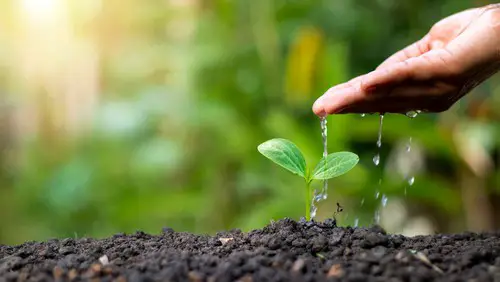
Underwatering is another common watering issue that can cause pothos stems to turn brown. When the plant is underwatered, the soil becomes dry, and the plant is unable to absorb enough water to sustain itself. This can cause the stems to turn brown and dry out.
To avoid underwatering, it is important to water the plant regularly and ensure that the soil is moist but not waterlogged. One should also ensure that the pot has proper drainage holes, which allow excess water to drain out.
Soil and Fertilization
Soil Conditions
One of the reasons why Pothos stems turn brown is due to poor soil conditions. Pothos prefers well-draining soil that is rich in nutrients. If the soil is too compact and does not allow for proper drainage, it can cause the roots to rot and the stems to turn brown. It is important to use a soil mix that is specifically formulated for indoor plants and has good drainage.
Pothos also prefers slightly acidic soil with a pH between 6.0 and 7.0. If the soil is too alkaline or too acidic, it can cause nutrient deficiencies and affect the plant’s growth. Testing the soil pH regularly can help ensure that the soil conditions are optimal for Pothos.
Fertilizer Issues
Fertilizer can also cause Pothos stems to turn brown. Over-fertilization or using the wrong type of fertilizer can lead to fertilizer burn, which can cause the leaves and stems to turn brown and dry out. It is important to follow the instructions on the fertilizer package and not to over-fertilize.
Pothos requires regular fertilization during its growing season, which is typically from spring to fall. A balanced fertilizer with a ratio of 20-20-20 or 10-10-10 can provide the necessary nutrients for healthy growth. It is important to avoid fertilizing during the dormant season, which is typically during the winter months.
Light and Temperature Factors
Light Requirements
Pothos plants require bright indirect light to thrive. Direct sunlight can cause excessive variegation and make the plant dry out, which can lead to dark brown stems. On the other hand, too little light can also cause brown stems and slow growth.
If the pothos is not getting enough light, the leaves may turn yellow and drop off. The plant may also become leggy and have long, thin stems with few leaves. It’s important to find a spot in the house that provides bright, indirect light for the pothos to grow properly.
Temperature Shock

Temperature shock can also cause brown stems in pothos plants. Pothos plants prefer temperatures between 60-85°F (15-29°C). If the temperature drops below 50°F (10°C), the plant can experience temperature shock, which can lead to brown stems.
Similarly, if the plant is exposed to sudden temperature changes, such as being moved from a warm house to a cold car, the plant can also experience temperature shock. It’s important to keep the pothos in a consistent temperature environment to prevent temperature shock.
Pest and Disease Problems
Pothos plants are susceptible to a variety of pests and diseases that can cause their stems to turn brown. Here are some common issues to look out for:
Insect Infestation
Insects such as mealybugs, scale insects, and aphids can infest pothos plants, causing damage to the stems and leaves. These pests feed on the sap of the plant, which can lead to brown spots on the stems and leaves. Insecticidal soap or rubbing alcohol can be used to control these pests.
Fungal and Bacterial Infections
Fungal and bacterial infections can also cause brown spots on pothos stems. These infections can be caused by overwatering, poor drainage, or high humidity levels.
Fungal infections can be treated with fungicides, while bacterial infections can be treated with bactericides. It is important to remove any infected plant material to prevent the spread of the infection.
Preventing pest and disease problems is key to keeping pothos plants healthy. Proper watering, good drainage, and adequate air circulation can help prevent these issues. Regularly inspecting plants for signs of pests or disease can also help catch problems early, before they cause significant damage.
Environmental Factors
Pothos plants are native to rainforests, where they grow in a humid and moist environment. Therefore, maintaining the right environmental factors is crucial for the healthy growth of your Pothos plant. Here are some important environmental factors that can affect the health of your Pothos plant.
Humidity Requirements
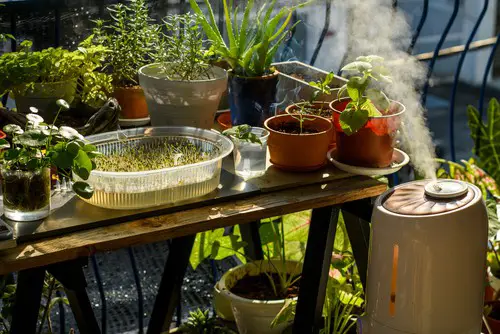
Pothos plants thrive in high humidity environments. Low humidity levels can cause the leaves to turn brown and develop dry patches. Therefore, it is important to keep the humidity levels around the plant high.
You can increase the humidity levels by placing a tray of water near the plant or using a humidifier. Alternatively, you can also mist the leaves with water regularly to keep them moist.
Air Circulation
Air circulation is another important factor that affects the health of your Pothos plant. Poor air circulation can cause the plant to develop brown spots on the leaves and stems. Therefore, it is important to ensure that the plant is placed in an area with good air circulation. You can also use a fan to improve air circulation around the plant.
Identifying Symptoms and Providing Solutions
Pothos plants are known for their hardiness and ability to thrive in a variety of conditions. However, if you notice your pothos stems turning brown, it may be an indication that something is wrong. In this section, we will discuss the symptoms of brown stems in pothos plants and provide solutions to help you revive your plant.
1. Symptoms
Brown stems are a common symptom of pothos plants that are not receiving the proper care. If you notice brown spots or yellow leaves on your plant, it may be an indication that the roots are not getting enough water or nutrients. Curling leaves and leaves turning brown are also signs that your pothos plant is sick.
2. Identifying the Problem
To identify the problem, start by checking the soil moisture. Overwatering can lead to root rot, which can cause brown stems. On the other hand, underwatering can cause the leaves to curl and turn yellow. If the soil is too dry, it’s time to water your plant. If the soil is too wet, allow it to dry out before watering again.
Another common cause of brown stems is pests. Inspect your plant for any signs of insect infestation, such as webs or tiny bugs. If you notice any pests, treat your plant with an insecticide.
3. Providing Solutions
If your pothos stems are turning brown, there are several solutions you can try. Here are some tips to help you revive your plant:
- Water your plant properly: Pothos plants prefer moist soil, but they don’t like to be overwatered. Make sure the soil is moist but not waterlogged.
- Fertilize your plant: Pothos plants need regular fertilization to thrive. Use a balanced fertilizer every two weeks during the growing season.
- Repot your plant: If your pothos plant is rootbound, it may be time to repot it. Choose a pot that is one size larger than the current pot and use fresh potting soil.
- Trim your plant: If your pothos plant has brown stems, trim them back to healthy growth. This will encourage new growth and help your plant recover.
- Treat for pests: If you notice any pests on your plant, treat it with an insecticide. Follow the instructions carefully to avoid damaging your plant.
Preventive Measures and Remedial Actions
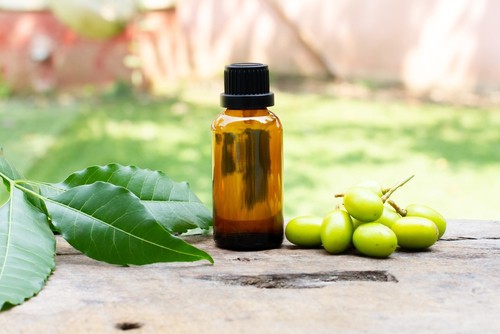
Repotting
One of the reasons why Pothos stems turn brown is due to soil issues. Over time, the soil can become compacted and depleted of nutrients, which can stress the plant and lead to root rot.
Repotting your Pothos can help prevent soil issues. When repotting, use a well-draining soil mix that contains perlite or vermiculite to improve drainage. It is also important to choose a pot with drainage holes to prevent overwatering.
Using Neem Oil
Another effective way to save Pothos from brown stems is by using neem oil. Neem oil is a natural insecticide that can help prevent and control pests that can damage the plant. To use neem oil, mix a few drops with water and spray the solution on the leaves and stems of your Pothos. Repeat this process every two weeks to keep pests at bay.
In addition to using neem oil, it is important to maintain proper watering practices to prevent your Pothos from becoming distressed. Overwatering can lead to root rot, while underwatering can cause the plant to become stressed. To prevent these issues, water your Pothos only when the top inch of soil is dry to the touch.
Frequently Asked Questions
How do I prevent brown stem rot in my pothos plant?
To prevent brown stem rot, it is important to avoid overwatering your pothos plant. Make sure the soil is well-draining and allow the soil to dry out slightly between watering. Additionally, avoid placing your pothos in areas with cold drafts or extreme temperature changes.
What causes pothos stems to turn brown?
Pothos stems can turn brown due to a variety of factors including overwatering, root rot, pests, diseases, cold exposure, incorrect soil, and overfertilization. Identifying the root cause of brown stems is crucial to determining the proper course of action to revive your pothos plant.
How can I revive a pothos plant with brown stems?
To revive a pothos plant with brown stems, start by identifying the root cause of the issue. If the cause is overwatering, allow the soil to dry out before watering again.
If the cause is root rot, consider repotting your plant in fresh, well-draining soil. Additionally, remove any damaged or dead stems and leaves to encourage new growth.
What are some common reasons for pothos stems to shrivel?
Pothos stems can shrivel due to underwatering, overfertilization, or lack of humidity. To prevent shriveling, make sure your pothos is receiving enough water, but not too much, and consider using a humidifier or placing a tray of water near your plant to increase humidity levels.
Can pothos stems split due to overwatering?
Yes, overwatering can cause pothos stems to split and become mushy. To prevent this, make sure your pothos plant is not sitting in standing water and that the soil is well-draining.
What are some ways to care for satin pothos to prevent brown stems?
To care for a satin pothos and prevent brown stems, make sure the plant is receiving enough indirect light and that the soil is well-draining. Additionally, avoid overwatering and fertilizing and consider misting the leaves to increase humidity levels.

Hey, I’m Lisa and I’ve been an avid gardener for over 30 years. I love writing, talking and living in the garden! Feel free to connect with me on my socials below


